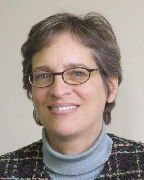Today's leading design and construction firms are fighting a battle for survival to differentiate their sustainability services and to be a part of the climate solution. The McGraw Hill Green Outlook 2011 report reads: "Once an emerging trend or a niche sector, green building has become a significant part of today's construction industry and is expected to keep growing." In addition, the building industry is responsible for nearly half of U.S. CO2 emissions and this number is only expected to rise (EIA, USGBC). This results in an enormous market opportunity for leaders in the building industry. Yet according to our 2010 Green Firm Report, there is a significant disparity between most companies' marketing claims and their true capability to deliver sustainability services.
The Green Roundtable / NEXUS are expanding the Green Firm Certification program throughout the United States and beyond. The certification is the first 3rd-party program to evaluate and recognize design and construction firms' capability to deliver consistent, high quality sustainability services. The certification provides a roadmap for continuous improvement to help firms understand, set and monitor their sustainability goals. Certification offers firms differentiation at a time when it's needed most and offers owners third-party verification when hiring teams.
The diversity of firms in the Boston area pilot program demonstrates the diverse size and sectors that the certification program addresses. Firms include HMFH Architects, Goody Clancy, Studio G Architects, Vanderweil Engineers, Shawmut Design and Construction, and Nexamp.
"The value of certification," said Julie Paquette at Vanderweil Engineers, "Is that we're able to gauge our performance, and that we're able to plainly account for and communicate that to our clients." Participants demonstrate performance and other criteria of the certification through a two-day audit process.
Certification addresses recognized standards such as LEED, Integrated Project Delivery, and Architecture 2030, but goes beyond these specific standards to look at overall organizational capacity.
Studio G principal Gail Sullivan shares her motivation for joining: "We really wanted to look at the process of the entire organization, and LEED doesn't do that. I really jumped on the opportunity." It also acknowledges that firms are in different places. Some firms have completely institutionalized sustainable approaches and simply benefit from third-party validation; others are just beginning their sustainability efforts; most are somewhere in between and need to understand and address their gaps. Wherever a firm falls on this spectrum, certification provides a roadmap to continuous improvement in the built environment.
Tags:







